
Aemilia is a genus of tiger moths in the family Erebidae described by William Forsell Kirby in 1892. It was initially named Ameles, but this name properly refers to a praying mantis genus.
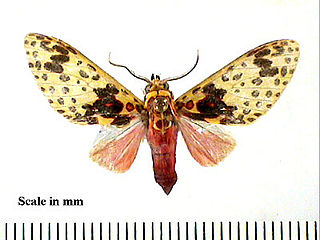
Amaxia is a genus of moths in the family Erebidae erected by Francis Walker in 1855. The type species of the genus is Amaxia pardalisWalker, 1855.

Eucereon is a genus of tiger moths in the family Erebidae. The genus was erected by Jacob Hübner in 1819.

Idalus is a genus of moths in the family Erebidae. The genus was erected by Francis Walker in 1855.

Leucanopsis is a genus of moths in the family Erebidae. The genus was described by Alfredo Rei do Régo Barros in 1956.
Paracles is a genus of moths in the subfamily Arctiinae. The genus was described by Francis Walker in 1855. The species range from Panama to Patagonia, with quite a few in the southern temperate region of South America.
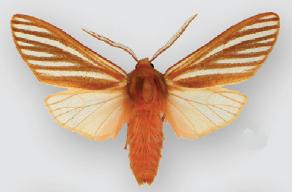
Pseudohemihyalea is a genus of moths in the family Erebidae described by Régo Barros in 1956. While the caterpillars of most species of Pseudohemihyalea feed on broad-leaved trees, the P. ambigua group has larvae that feed on conifers. Their forewing coloration has accordingly evolved to light-and-dark lengthwise striping, giving better camouflage among the slim needles of the host plants. In this, they seem to be convergent to certain geometer moths, such as Caripeta piniata or Sabulodes niveostriata.
Saurita is a genus of moths in the subfamily Arctiinae. The genus was erected by Gottlieb August Wilhelm Herrich-Schäffer in 1855.
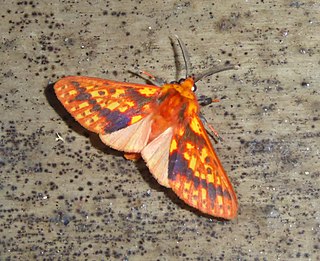
Symphlebia is a genus of moths in the family Erebidae. The genus was erected by Felder in 1874.

Trichromia is a genus of moths in the family Erebidae erected by Jacob Hübner in 1819. The members of this genus are largely indigenous to South America.
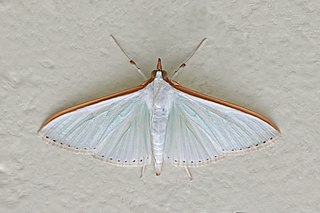
Diaphania is a genus of moths of the family Crambidae.

Melanchra is a genus of moths of the family Noctuidae.
Pseudyrias is a genus of moths of the family Erebidae. The genus was erected by George Hampson in 1926.
William Schaus was an American entomologist who became known for his major contribution to the knowledge and description of new species of the Neotropical Lepidoptera.

Megalopyge is a genus of moths in the family Megalopygidae.
Aemilia pagana is a moth of the family Erebidae. It was described by Schaus in 1894. It is found in Brazil.
Pseudohemihyalea carmen is a moth in the family Erebidae. It was described by William Schaus in 1920. It is found in Guatemala.

Apatelodes is a genus of moths of the family Apatelodidae first described by Packard in 1864.
Givira is a genus of moths in the family Cossidae.
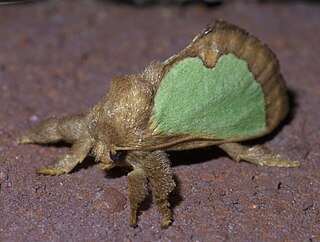
Euclea is a genus of moths in the family Limacodidae. The genus was erected by Jacob Hübner in 1819. There are at least 40 described species in Euclea.









